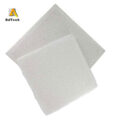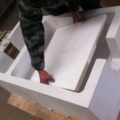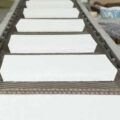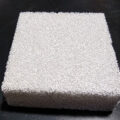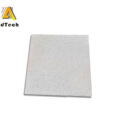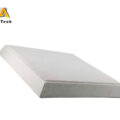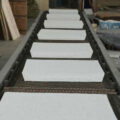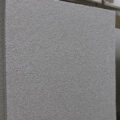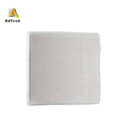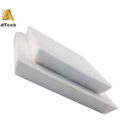AdTech is a professional in ceramic foam filter manufacturers. The ceramic foam filter is made of continuous reticulated foam plastic as the framework, which is dipped in mud and then roasted at high temperatures. Therefore, the raw materials for making the filter plate are divided into foam and mud.

Ceramic Foam Filter Manufacturers
The foam used in the production of metal foam filter should have sufficient elasticity and strength to ensure that it has recoverability and resistance to breakage when immersed in the mud. During the immersion stage, there will be no congenital deficiencies such as local depressions and cracks. The parameter that usually describes foam specifications is PPI (pores per inch), which is the number of pores per inch of length. Ceramic Foam Filter Manufacturers AdTech can offer 20-80 PPI ceramic foam filter.
The mechanical properties and surface quality of the ceramic filter plate are directly related to the mud. General requirements for making mud for ceramic foam filter:
(1) It should have a suitable viscosity. If the viscosity is too low, the foam will not absorb enough mud, which will reduce the strength of the filter plate and the specific gravity; although the viscosity is too high, it can increase the strength, but it will cause too many dead holes and even cause slag on the surface.
(2) The mud must have a certain fluidity to ensure that the mud can be easily squeezed in and out when the foam is immersed.
(3) The main raw materials that make up the mud should have a certain degree of hydrophilicity to ensure that the mud forms a uniformly suspended glue. If the hydrophilicity is poor, the solids in the mud are easy to precipitate and stay in the foam during the dipping process, resulting in dead holes and increased brittleness of the filter plate.
A good mud has a smooth, delicate and uniform hand feeling, and will not cause precipitation after long-term storage. The composition of the mud and the specifications of the raw materials have a decisive influence on the performance of the mud. Even if the specifications of the same raw material are slightly different, the deformation resistance, compressive strength, and surface brittleness of the finished products will be very different.

